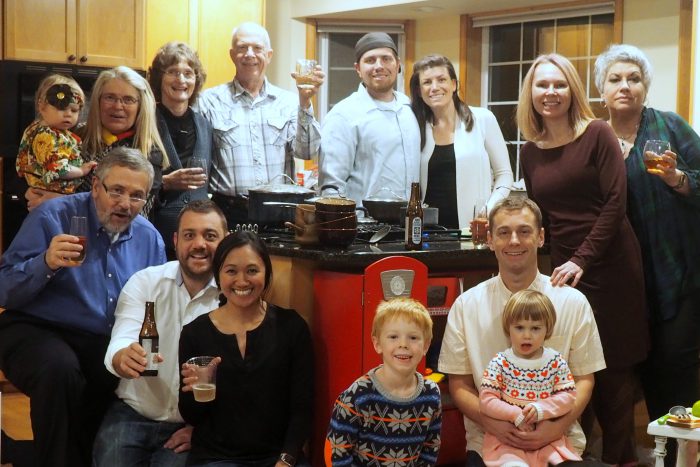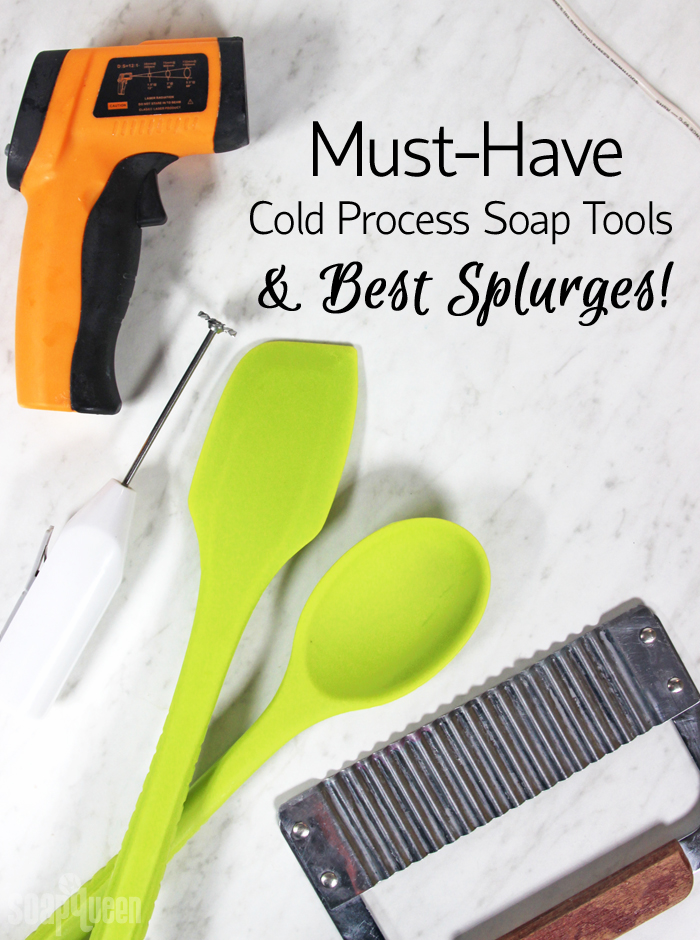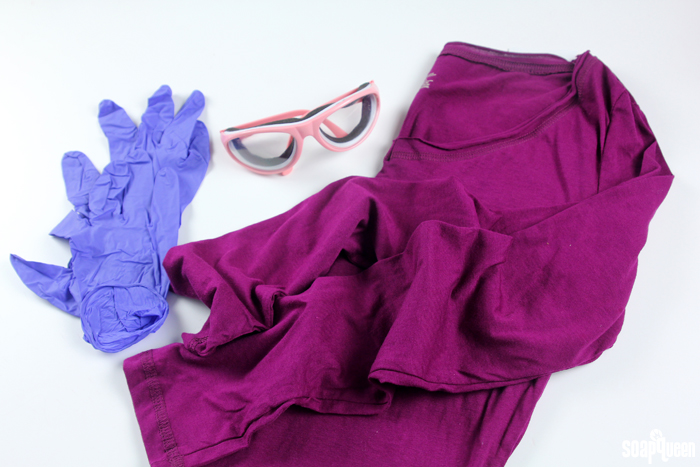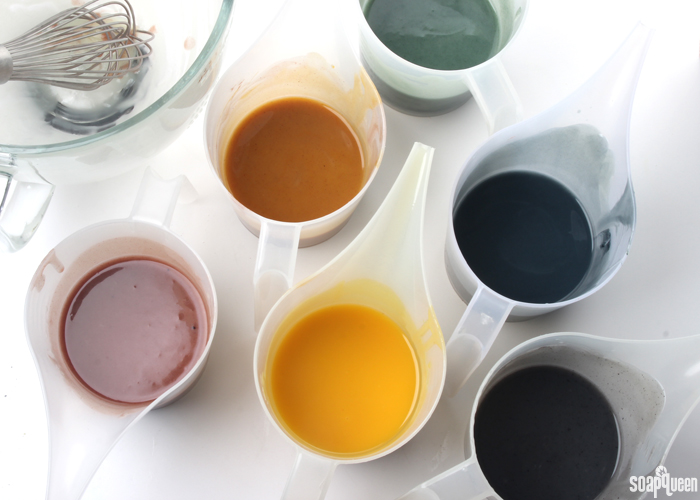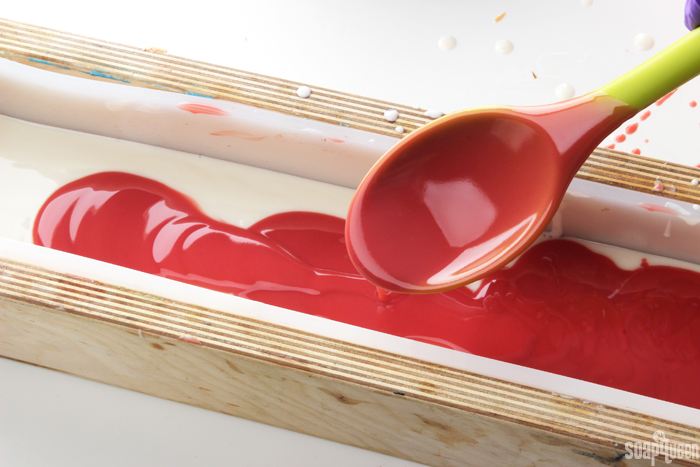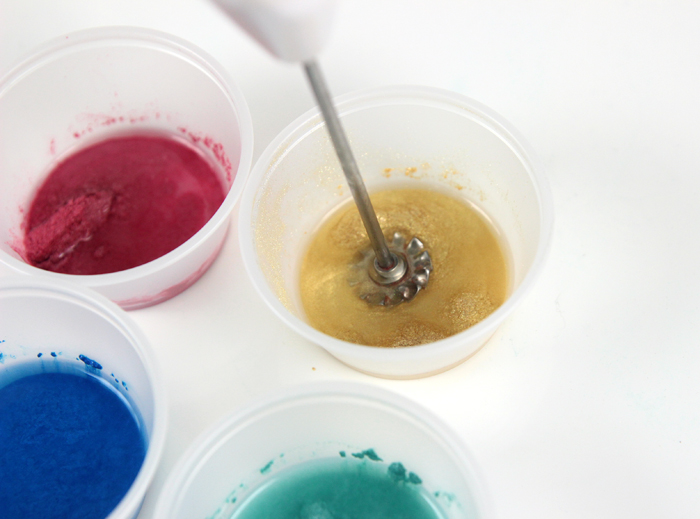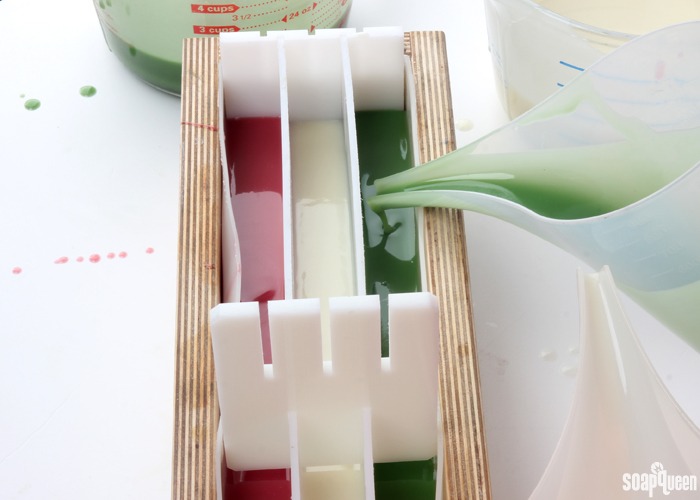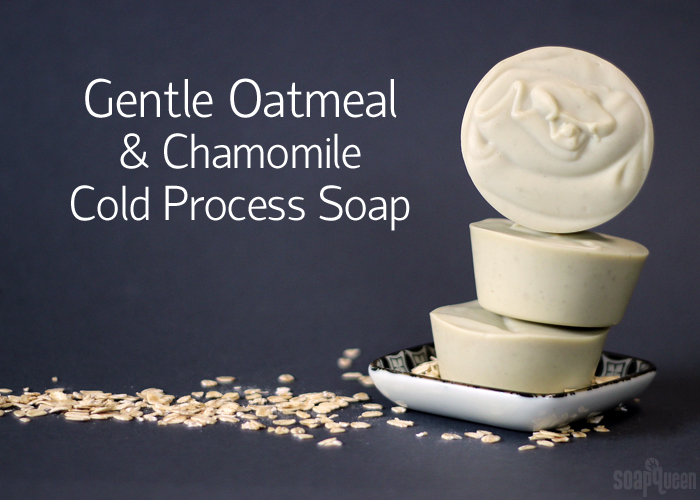This week the blog featured pretty pink tutorials, including the DIY Sprinkle Doughnut Bath Bombs on Soap Queen TV. They’re colored with Rosy Pink La Bomb Colorant and scented with Strawberry Fragrance Oil. Then, various micas are painted on the bath bombs to look like sprinkles. It’s a cute and easy project you can make with kids.
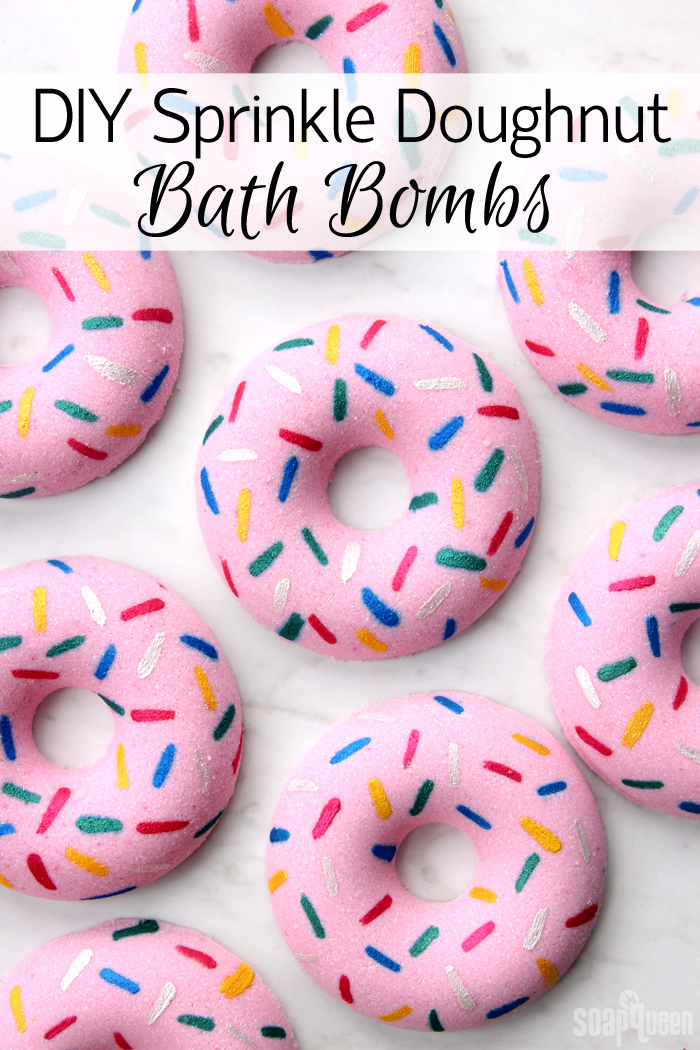
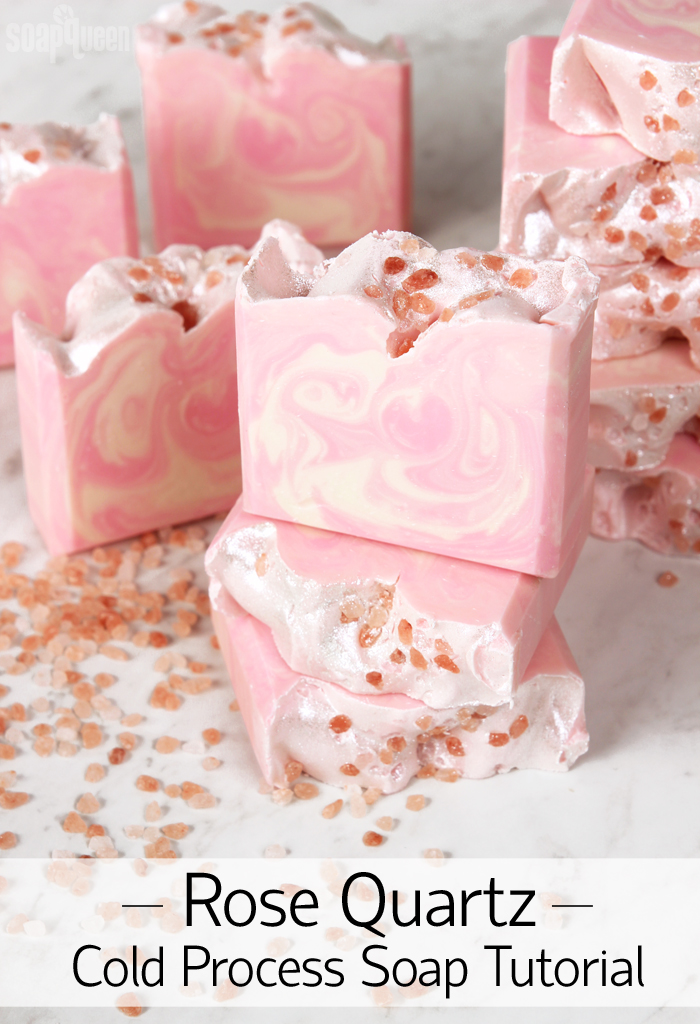
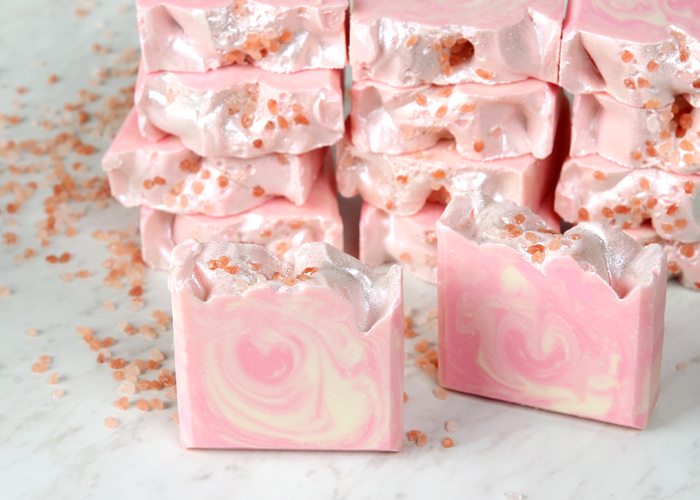
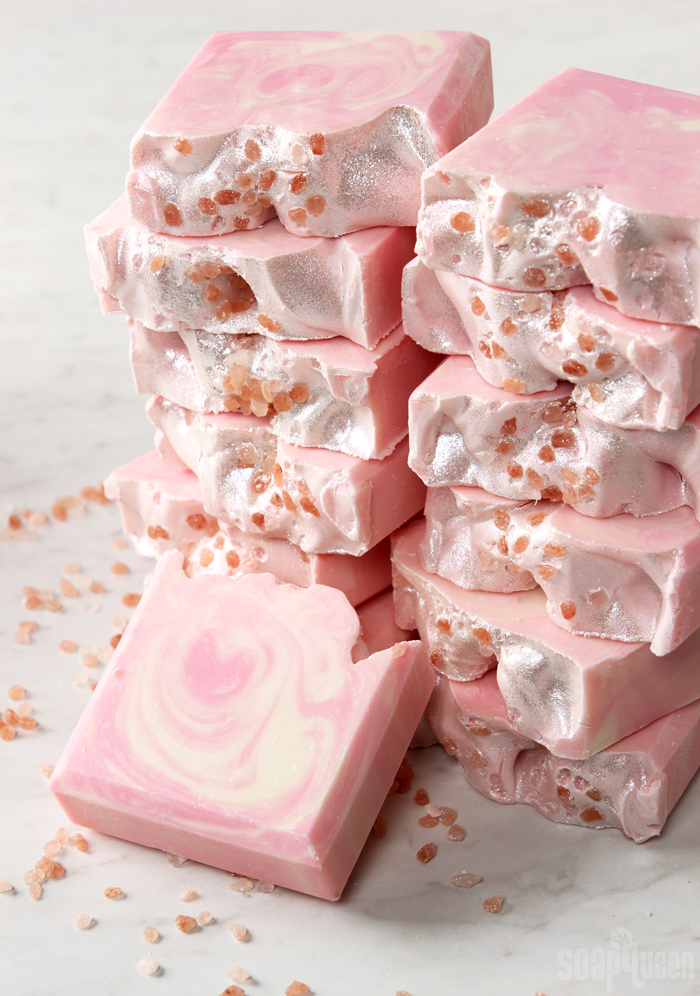
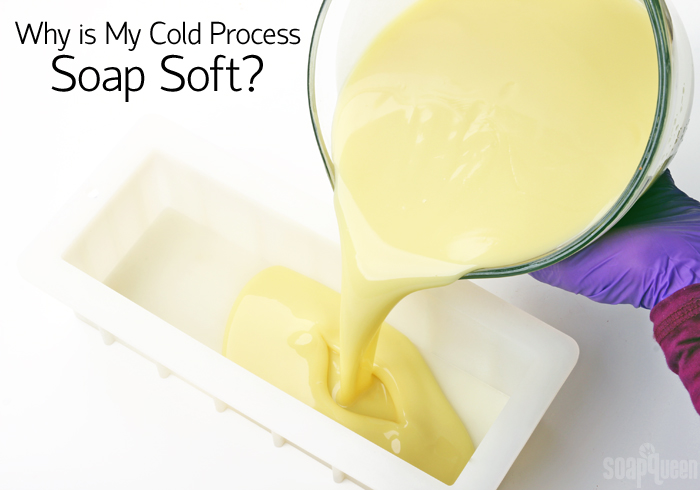
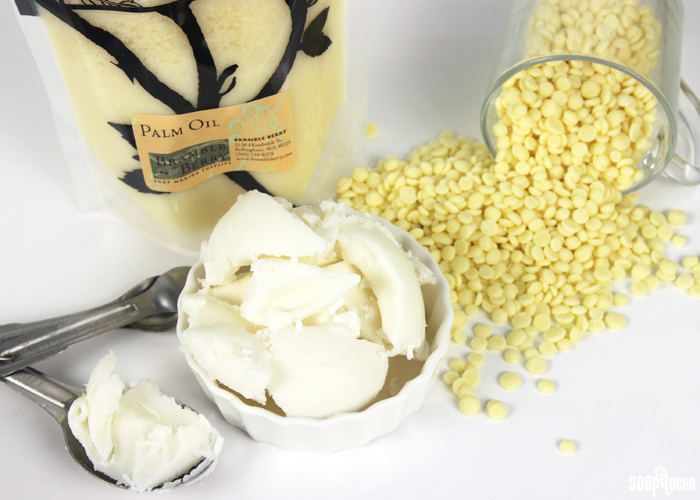 Using more firm oils and butters in your recipe will result in a firmer bar of soap.
Using more firm oils and butters in your recipe will result in a firmer bar of soap. 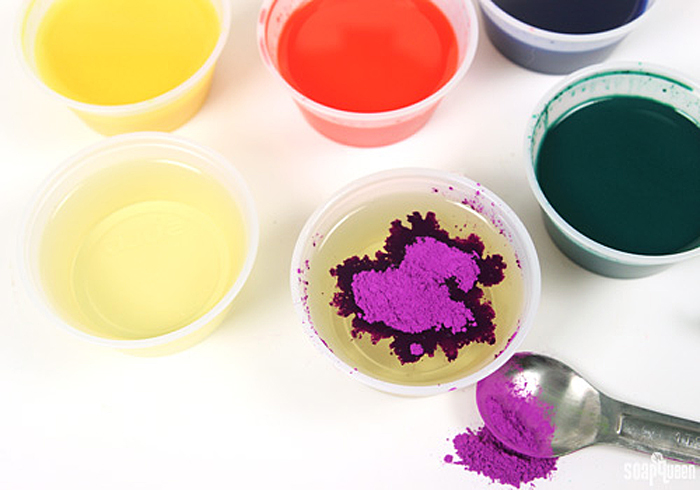 Adding too much extra oil (like with dispersed colorants) can lead to a soft bar of soap.
Adding too much extra oil (like with dispersed colorants) can lead to a soft bar of soap. 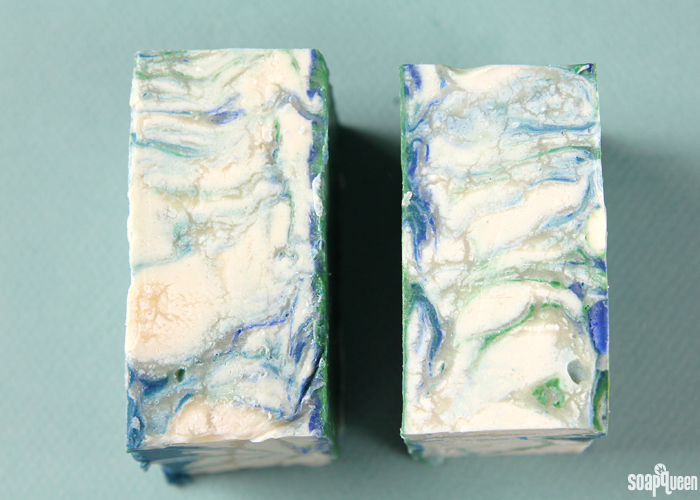 Water discounting soap reduces the chances of glycerin rivers, shown above. It also produces a bar that hardens faster.
Water discounting soap reduces the chances of glycerin rivers, shown above. It also produces a bar that hardens faster. 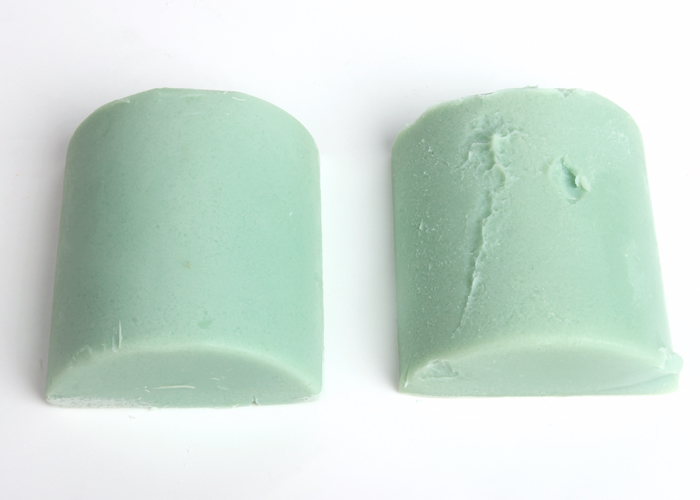 The bar on the left contained sodium lactate, while the bar on the right did not.
The bar on the left contained sodium lactate, while the bar on the right did not. 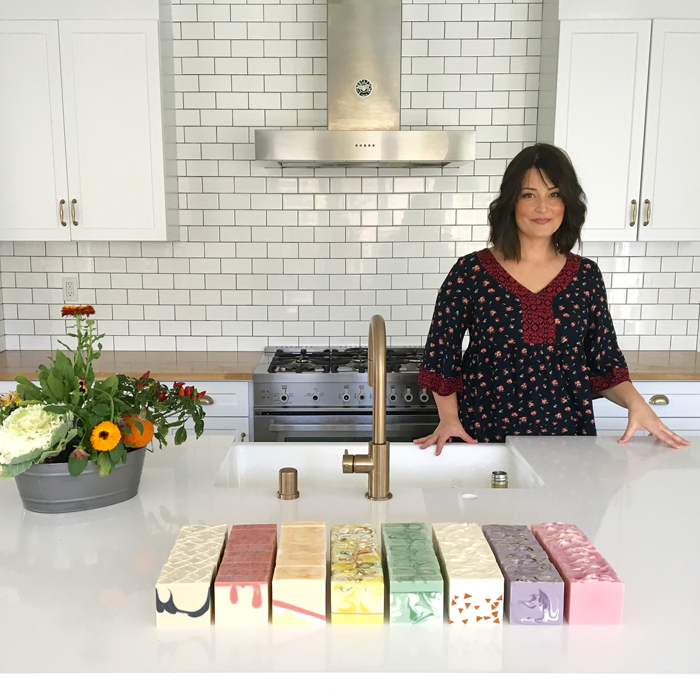 Tania in her gorgeous kitchen, along with a collection of her cold process soaps.
Tania in her gorgeous kitchen, along with a collection of her cold process soaps.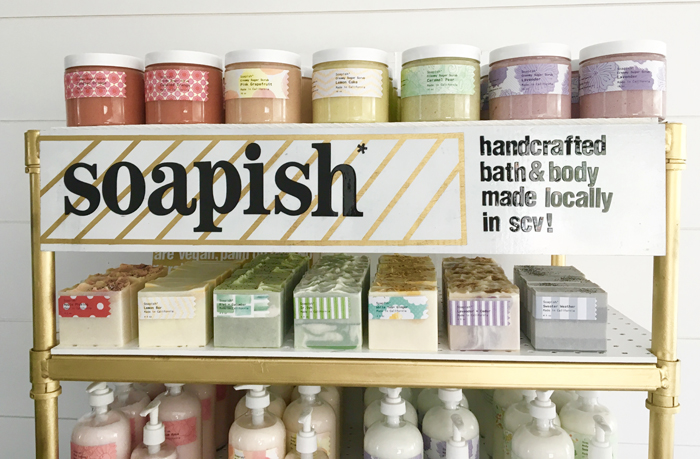 A beautiful Soapish display, full of soap, lotions and scrubs.
A beautiful Soapish display, full of soap, lotions and scrubs. 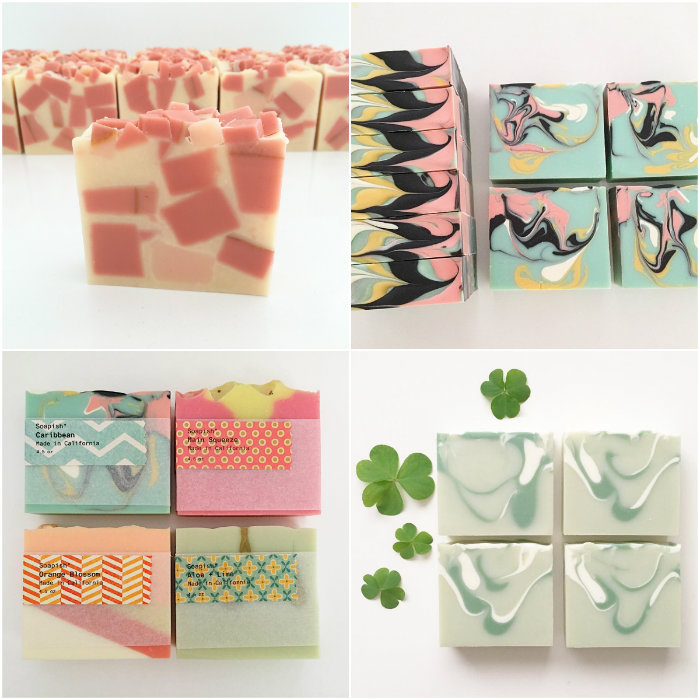 Top left, clockwise:
Top left, clockwise: 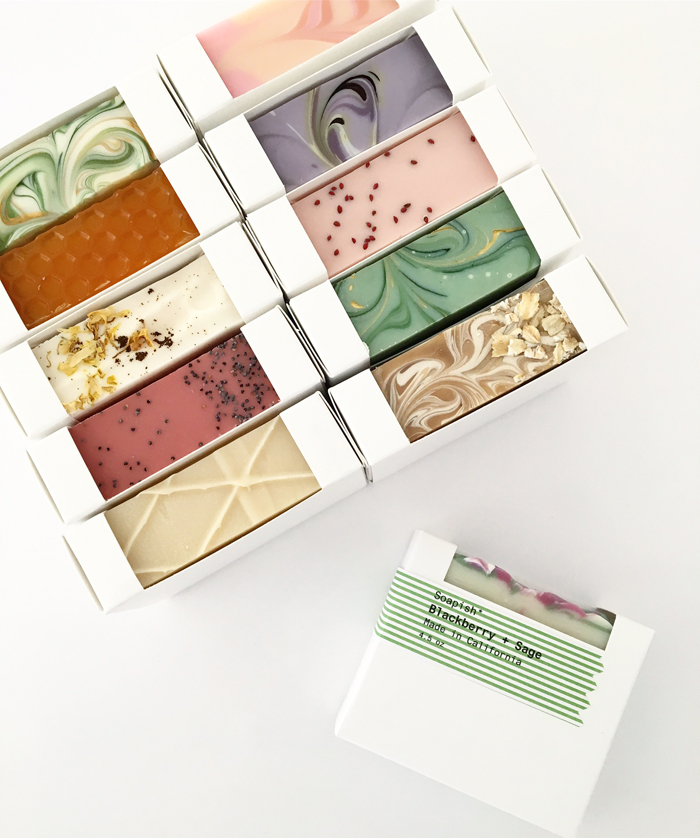 I love how clean and eye catching Tania’s packaging is. It really complements the soap!
I love how clean and eye catching Tania’s packaging is. It really complements the soap!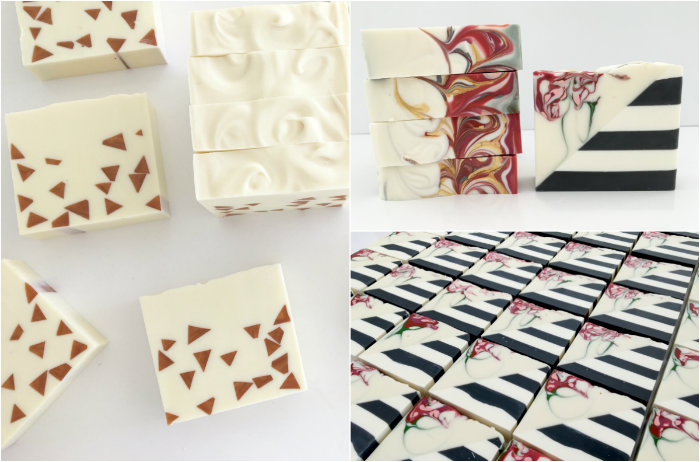 Left, clockwise: Tiny Triangle Embed Soap,
Left, clockwise: Tiny Triangle Embed Soap, 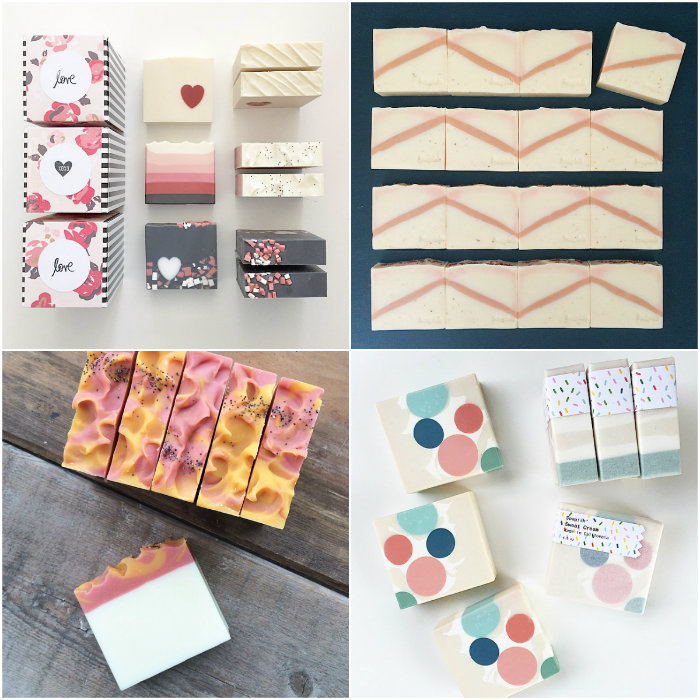 Top left, clockwise: A collection of Valentine’s Day Soap,
Top left, clockwise: A collection of Valentine’s Day Soap,  Tiny Triangle Embed Soap, scented with
Tiny Triangle Embed Soap, scented with 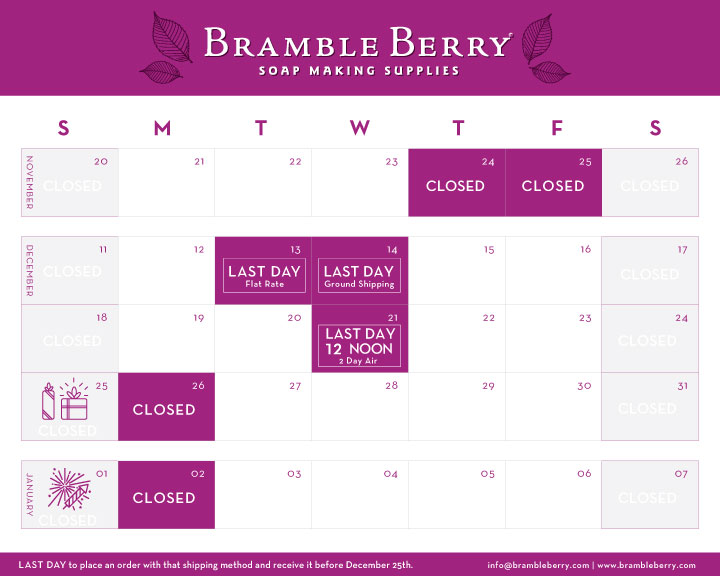
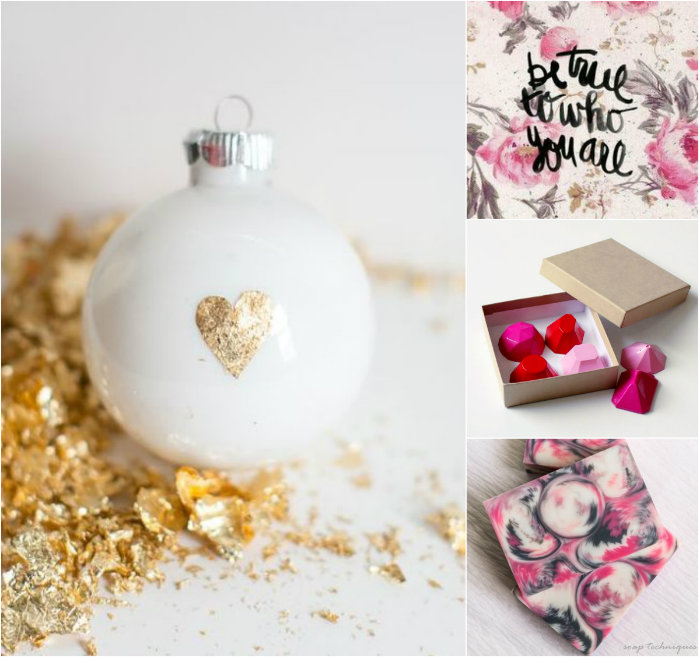
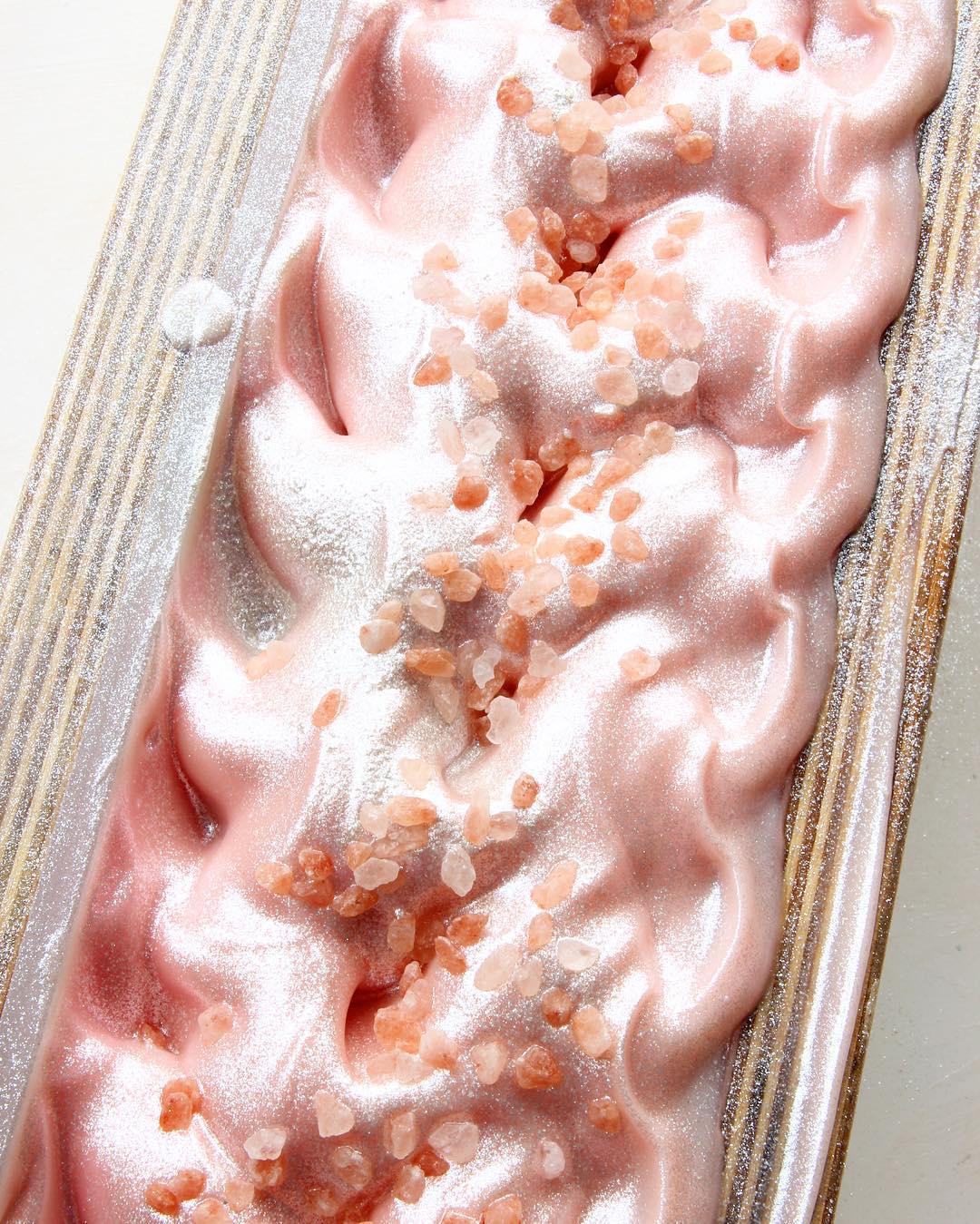
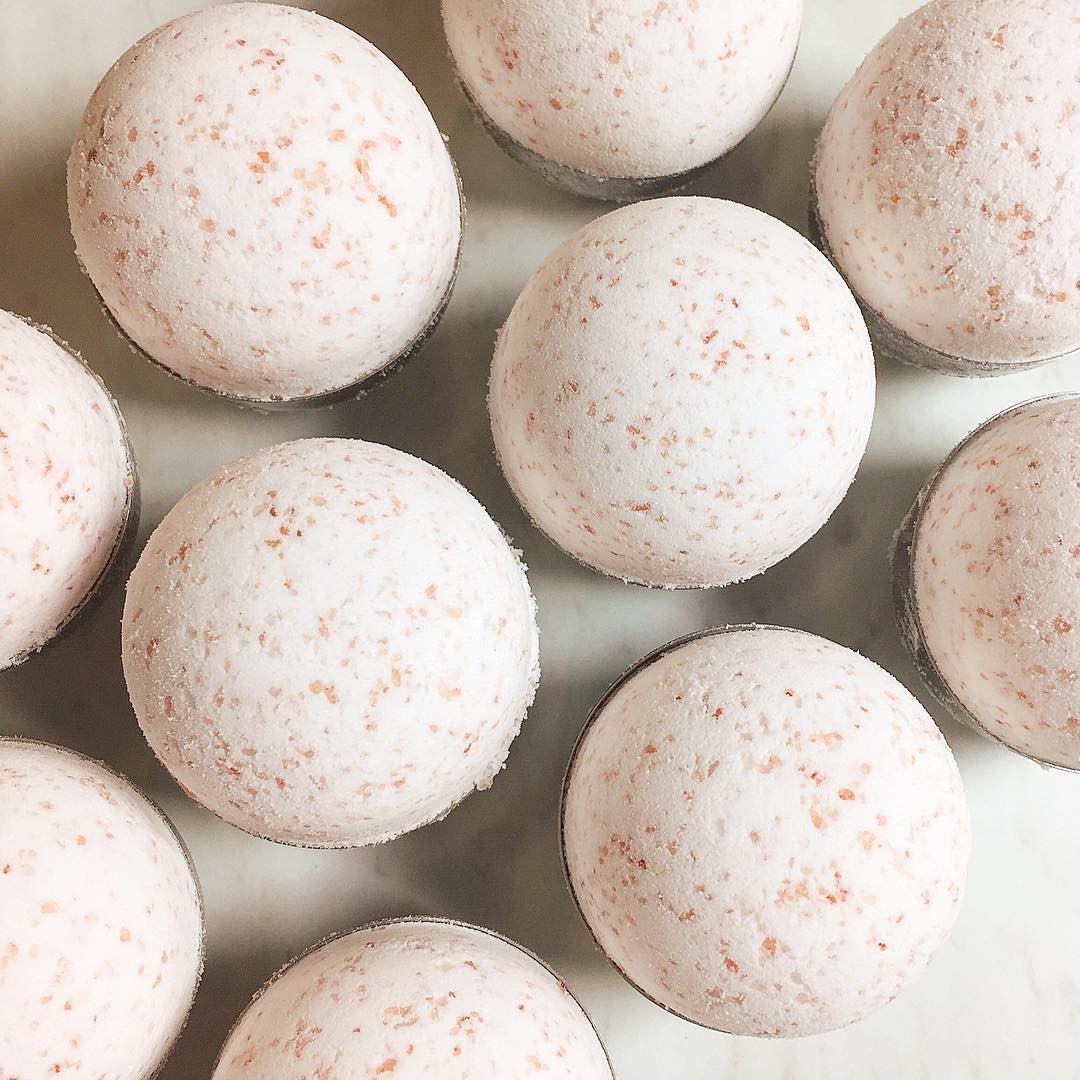
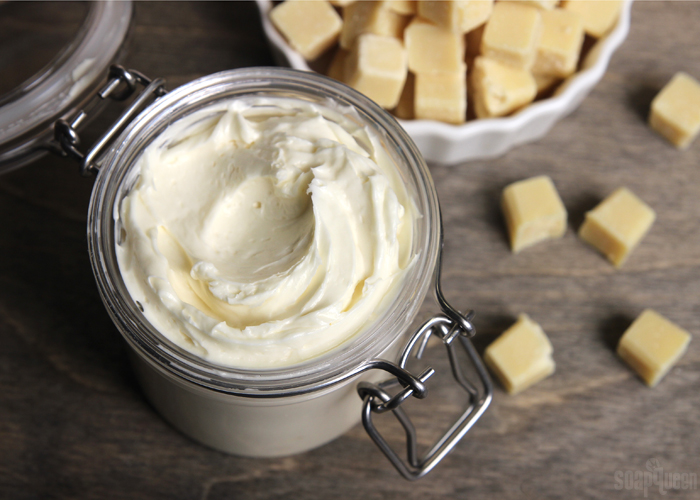
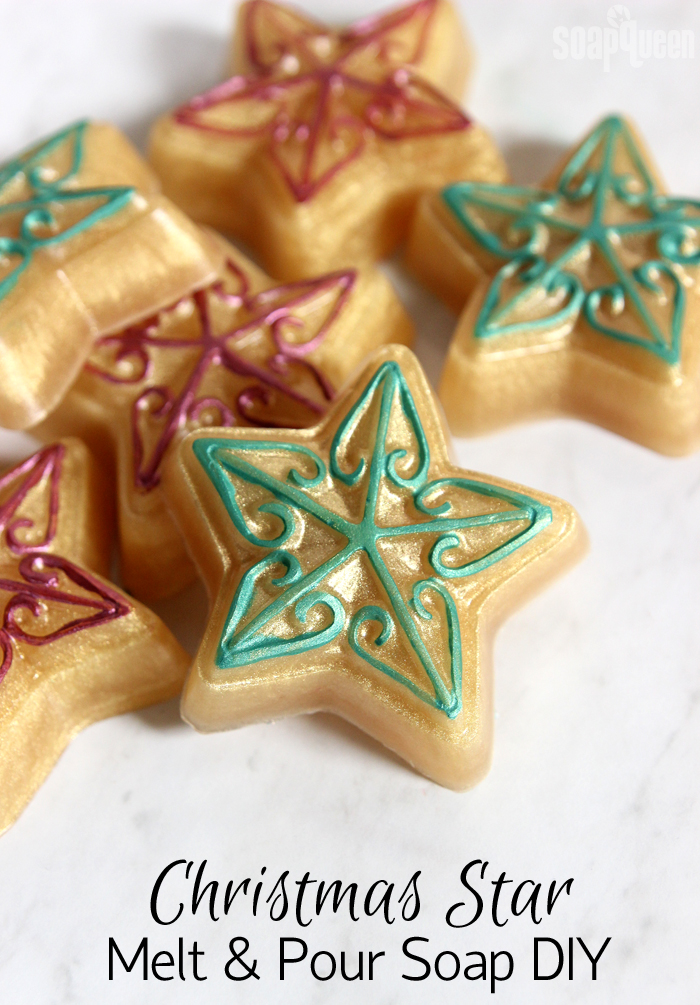
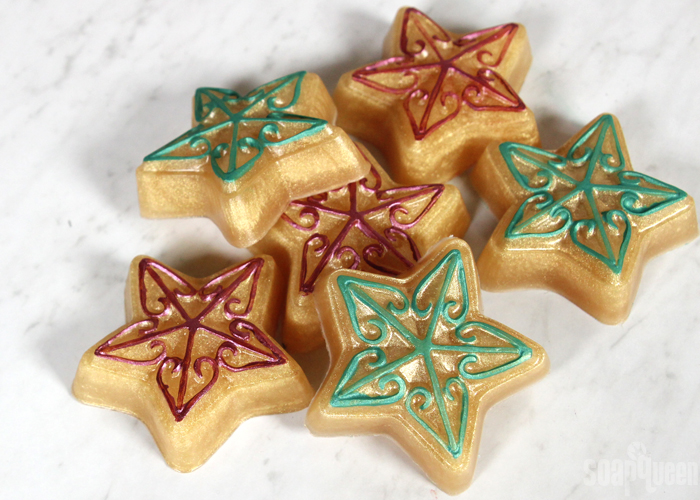
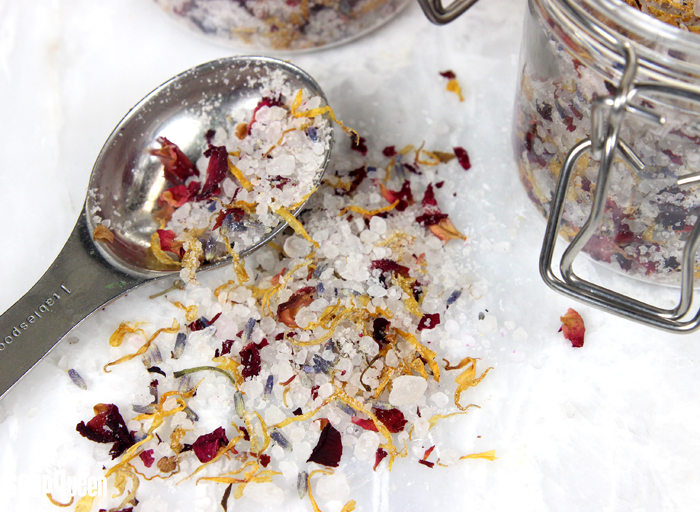
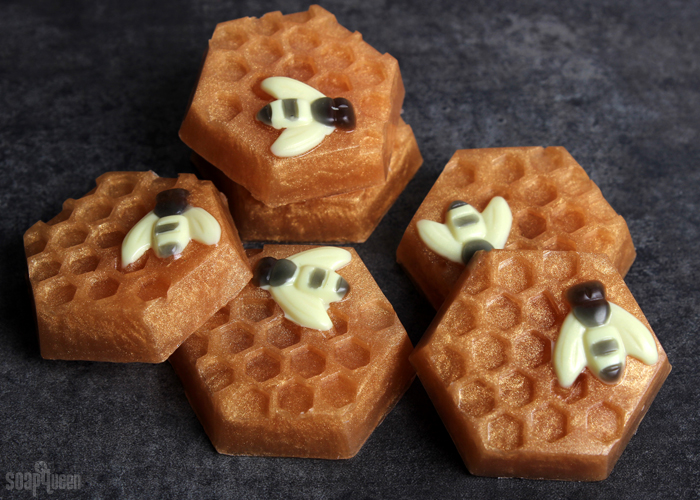
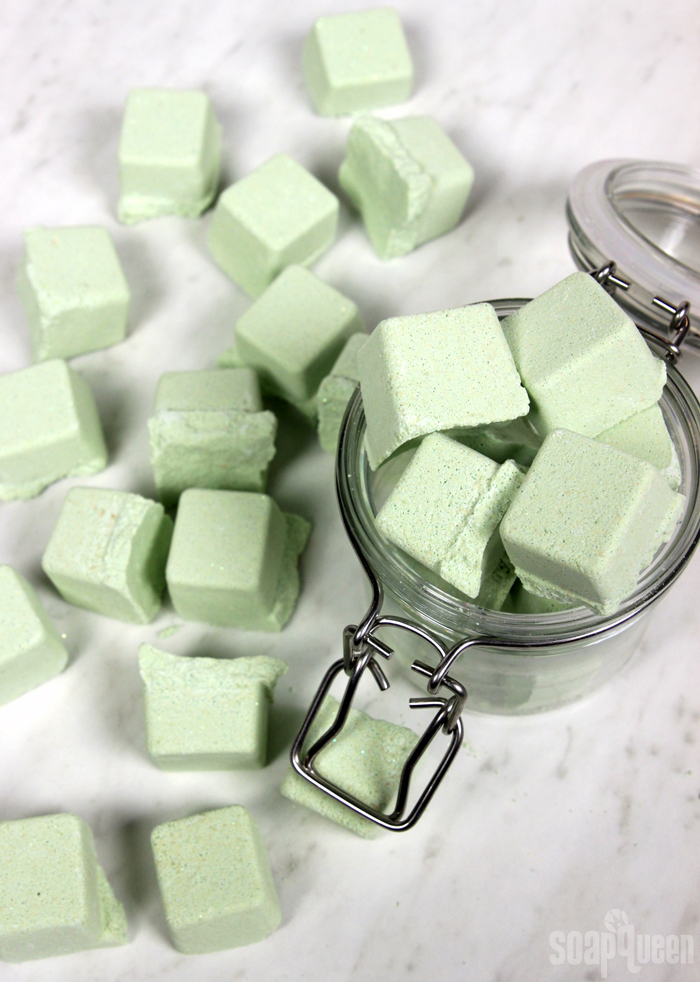
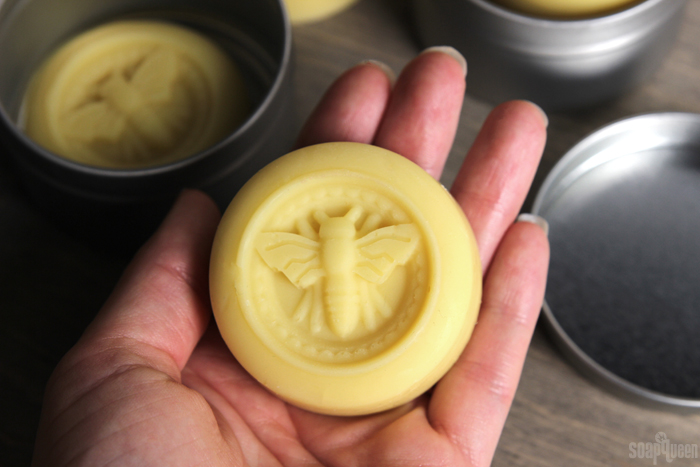
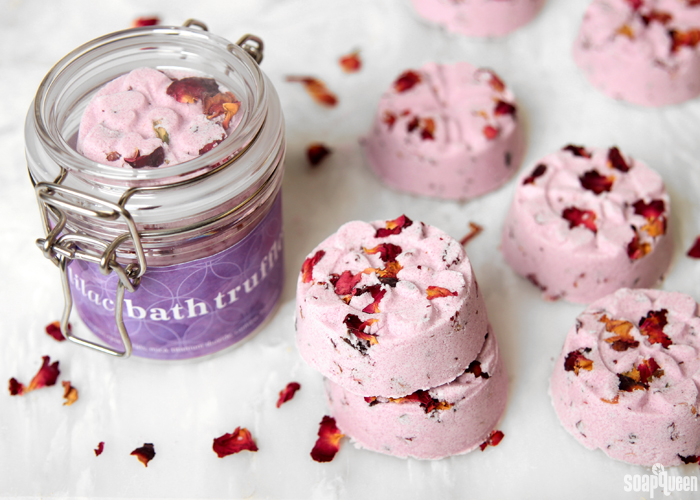
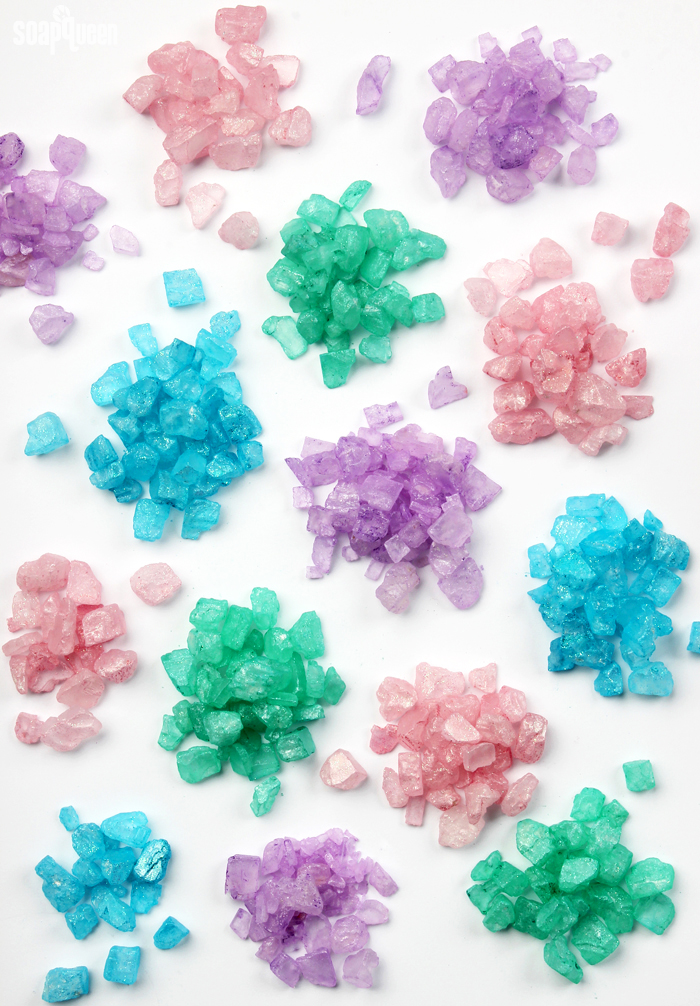
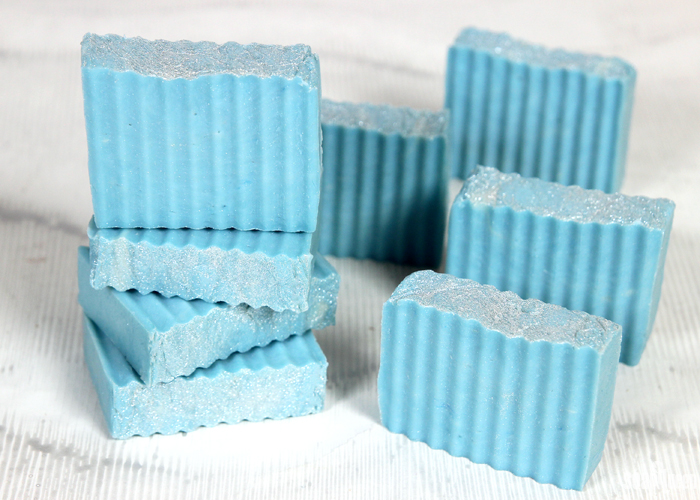
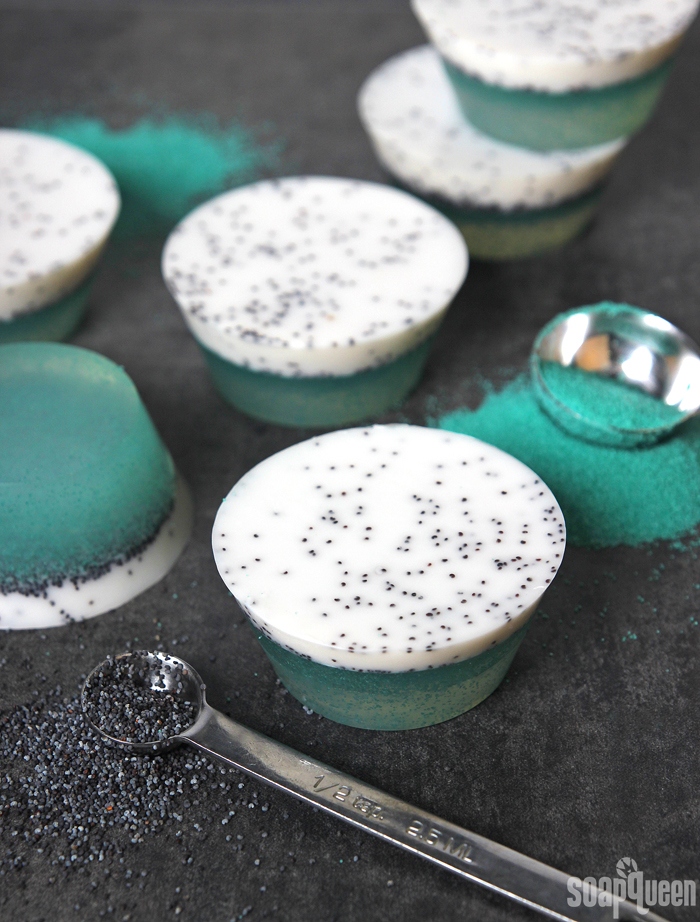
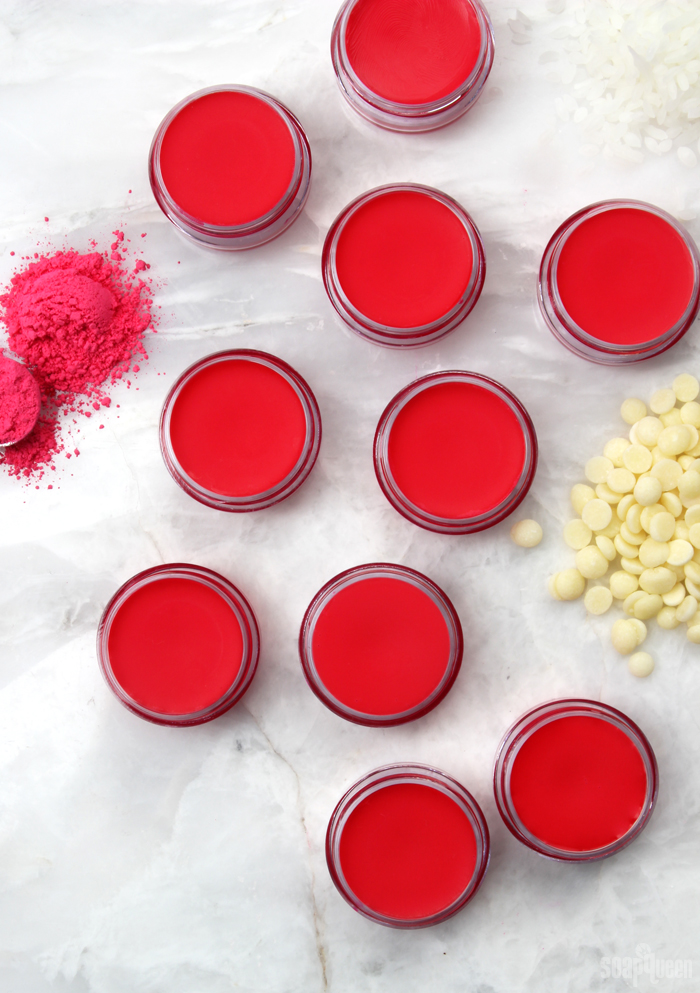
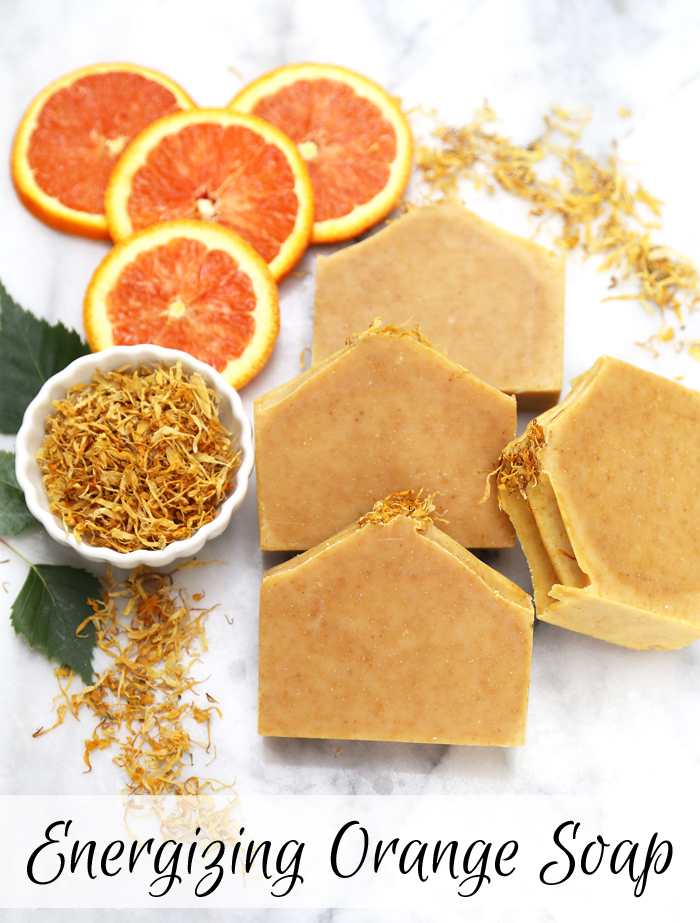
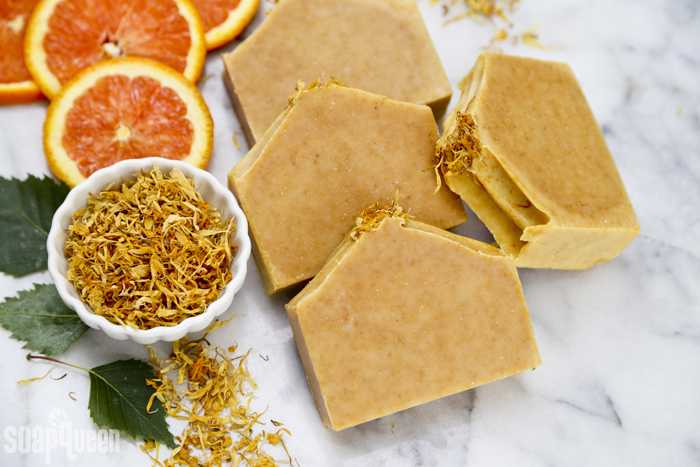
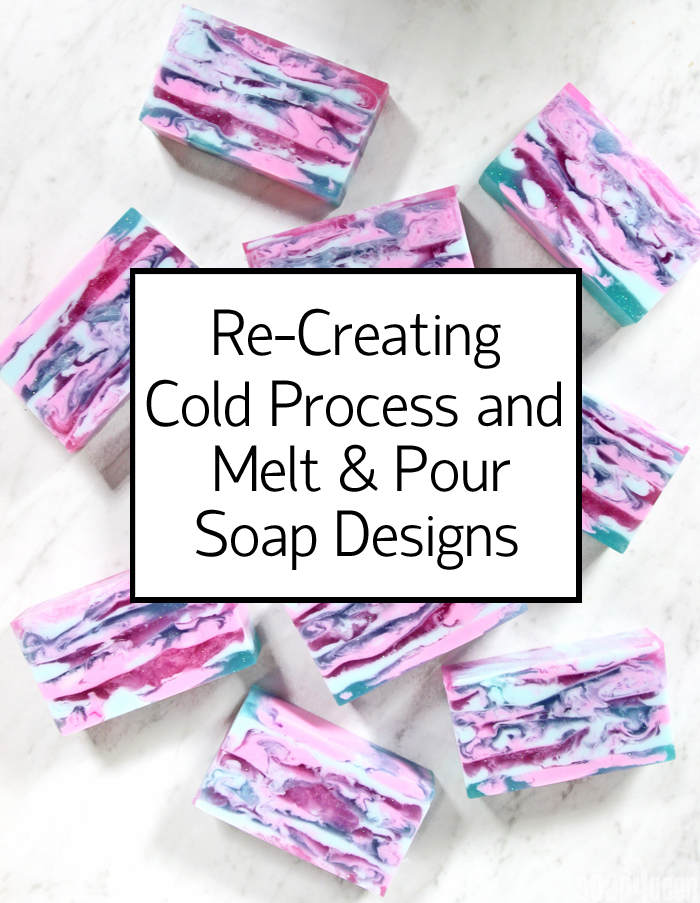
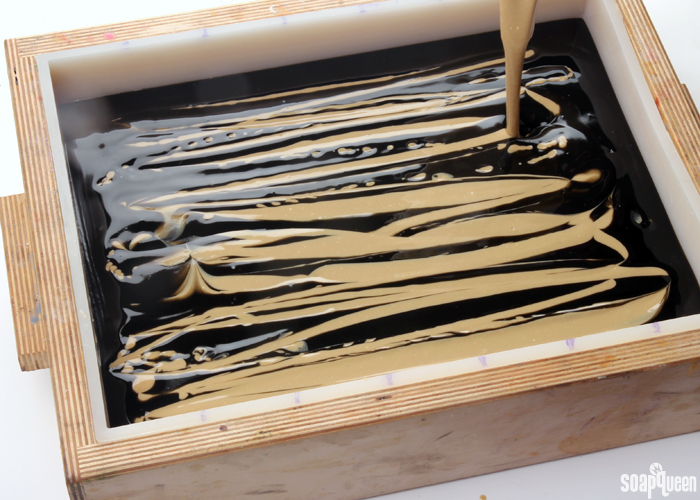 The texture of cold process soap allows you to pour distinct lines that hold their shape, as shown above. Melt and pour soap does not behave the same way.
The texture of cold process soap allows you to pour distinct lines that hold their shape, as shown above. Melt and pour soap does not behave the same way. 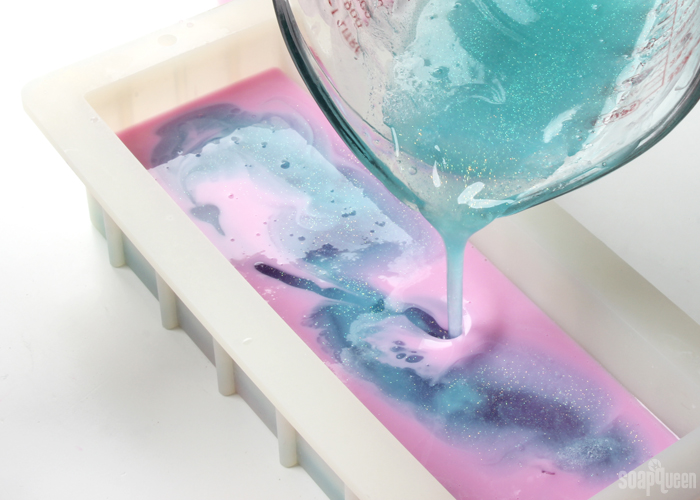 Swirls are not impossible with melt and pour soap, but they just won’t look like cold process swirls.
Swirls are not impossible with melt and pour soap, but they just won’t look like cold process swirls. 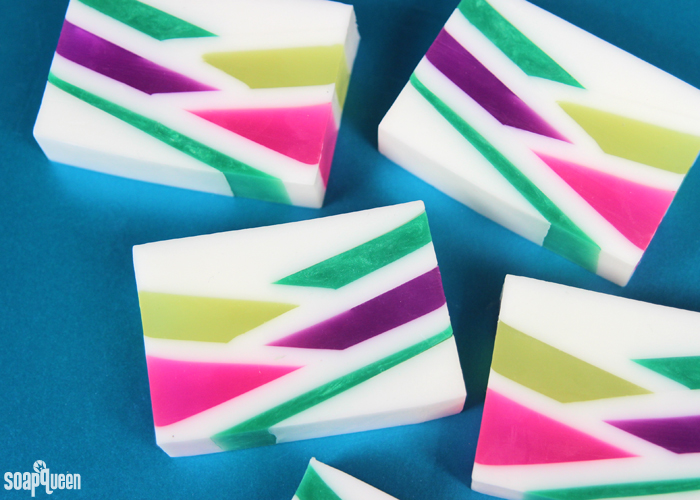
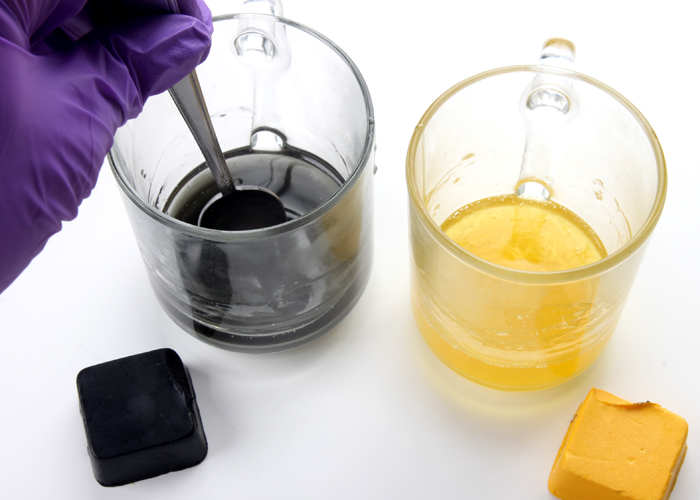
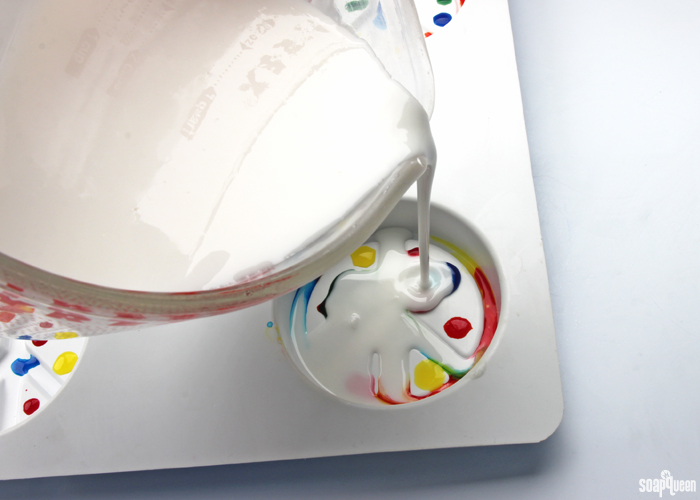 Plastic molds work better for melt and pour soap than cold process soap.
Plastic molds work better for melt and pour soap than cold process soap.